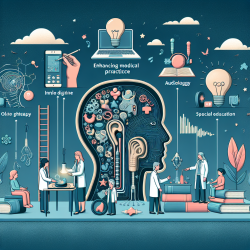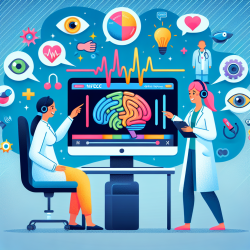Aphasia, a condition that affects the ability to communicate, can be deeply challenging for both patients and therapists. It requires a nuanced approach to therapy, one that balances the science of speech-language pathology with the art of understanding individual patient needs. The research presented in "Aphasia Therapy in Practice: Comprehension" offers valuable insights into enhancing therapy techniques for those suffering from comprehension difficulties associated with aphasia.
Comprehension difficulties in aphasia can range from mild to severe, affecting a patient's ability to understand spoken words, sentences, or longer verbal communications. The impact on daily life can be profound, affecting personal relationships, work, and the overall quality of life. As therapists, our goal is to implement strategies that not only address these challenges but also empower our patients.
The research highlights several key areas that practitioners can focus on to improve their therapeutic approach:
- Understanding Linguistic Variables: Recognizing the linguistic variables that affect comprehension is crucial. This includes the complexity of sentences, the familiarity of vocabulary, and the context in which communication occurs. Tailoring therapy to address these variables can significantly enhance comprehension.
- Non-Linguistic and Linguistic Strategies: The manual emphasizes the importance of both non-linguistic and linguistic strategies in facilitating comprehension. Non-linguistic strategies might include using gestures or visual aids, while linguistic strategies could involve simplifying language or focusing on key words. A combination of these approaches can be particularly effective.
- Diagnostic Group Patterns: Different types of aphasia present with varying comprehension challenges. The research discusses patterns of responses from different diagnostic groups, offering insights into how therapy can be customized for more effective outcomes.
- Encouraging Active Strategies: Patients can be taught active strategies to improve their comprehension. This includes predicting content, asking for clarification, and summarizing information. These strategies not only enhance comprehension but also increase patient engagement in their recovery process.
- Evaluating Responses: The manual provides guidance on formal and informal methods of evaluating responses to therapy. This is vital for assessing progress and adjusting therapy as needed to meet individual patient needs.
Implementing these findings into clinical practice requires a thoughtful approach. Here are some practical tips for practitioners:
- Personalize Therapy: Use the research as a foundation, but always tailor your approach to the specific needs of your patient. Consider their interests, daily activities, and communication goals when designing therapy activities.
- Incorporate Technology: Technological tools, such as tablet apps designed for aphasia therapy, can provide engaging ways to practice comprehension strategies. These tools can also facilitate home practice, extending the benefits of therapy beyond the clinical setting.
- Engage Caregivers: Caregivers play a crucial role in the recovery process. Provide them with training on how to support comprehension strategies at home. This might include using simplified language, pausing to allow for processing time, and using visual aids to enhance understanding.
- Measure Progress: Use both formal assessments and informal observations to measure progress. This can help in adjusting therapy strategies to ensure they are as effective as possible.
- Encourage Peer Support: Group therapy sessions can provide opportunities for patients to practice comprehension strategies in a supportive environment. Peer interactions can also offer motivation and encouragement.
As we integrate these insights into our practice, it's important to continue our own learning and research. The field of aphasia therapy is constantly evolving, and staying informed about the latest strategies and technologies can help us provide the best possible care for our patients.
For those interested in delving deeper into the research and its applications, I highly recommend reading the original paper. It provides a comprehensive overview of the strategies discussed and offers detailed guidance on implementing them in clinical practice. To read the original research paper, please follow this link: Aphasia Therapy in Practice: Comprehension.
In conclusion, the research presented in "Aphasia Therapy in Practice: Comprehension" offers valuable insights that can significantly enhance our therapy approaches. By understanding and applying these strategies, we can make a meaningful difference in the lives of those affected by aphasia.










